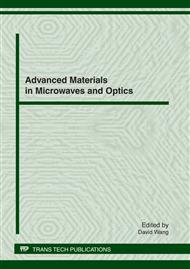p.243
p.250
p.254
p.258
p.263
p.269
p.273
p.278
p.283
Millimetric Waves Technologies: Opportunities and Challenges
Abstract:
Providing an available wideband and better antenna beam forming are two good profits of millimeter wave (mmWave) technology. MmWave technology makes radio systems lighter and smaller and radars more precise. Today, commercial MmWave equipment work below 90GHz frequencies. MmWave radios work to transport Internat traffic in the backhaul of communication networks. There is a challenge in mmWave technology since the prices of equipment increases as the frequency increases. In this paper we study the applications of mmWave technology, its products, standards and compare it with other wireless technologies.
Info:
Periodical:
Pages:
263-268
Citation:
Online since:
January 2012
Keywords:
Price:
Сopyright:
© 2012 Trans Tech Publications Ltd. All Rights Reserved
Share:
Citation:


